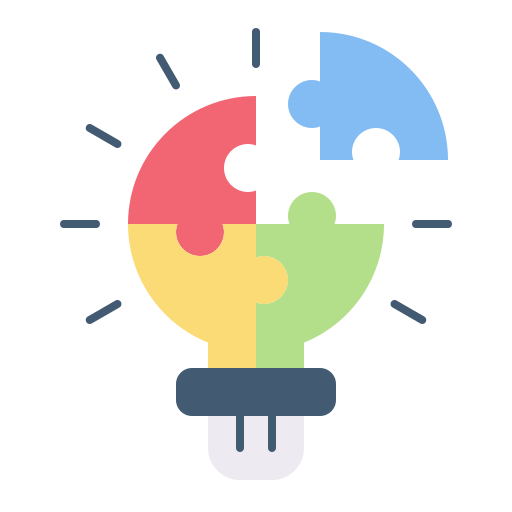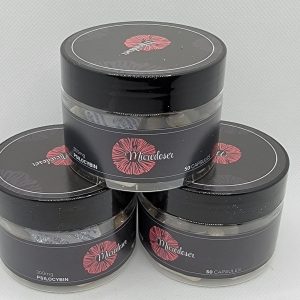Microdosing involves taking a very small dose of some popular hallucinogenic substances.
Proponents of microdosing believe that the practice benefits the mind, and research has recently started to explore this possibility.

Creativity
Creativity is a harder concept to quantify and validate, but many people who microdose claim to do so for its ability to boost their creative faculties. However, a combination of other factors, such as stress reduction or increased focus, may lead to this benefit. Again, evidence for this is anecdotal, and scientific studies are yet to back these claims.

Focus
Microdosing may also help with temporary focus, allowing a person to work on a big project without their mind wandering. One studyTrusted Source suggests that microdosing led to lower levels of distractability.

Quitting other habits
Another claim is that microdosing helps people quit other habits, such as smoking cigarettes or drinking alcohol. Some people even feel as though they do not need to use simple stimulants such as coffee when they microdose. Although some formal research explores the possibility of using psychedelics, such as psilocybin, to help people stop using other drugs, there is little scientific research or proof as of yet. However, anecdotal claims suggest promise.
Microdosing is a relatively recent phenomenon involving taking very small doses of some popular psychedelic hallucinogens or other drugs.
Importantly, this is a very small dose of the psychedelic that is not enough to produce a “trip” or the hallucinations often associated with these drugs.
As a study in the Journal of Psychopharmacology notes, a technical definition of a microdose would be a dose of a drug that is only 1% of the active dose.
However, the more common term for microdosing — a small fraction of a “normal dose” — is rather vague, as it does not provide a defined numerical value. Therefore, the common accepted definition is a small dose that does not causeTrusted Source any intoxication or significant alteration of consciousness.
Anecdotal evidence suggests that people tend to take a small dose and then take it regularly or semi-regularly for an extended period. The duration of use varies from person to person.
Improved Brain Functioning
Anecdotal evidence shows that some people believe that microdosing helps improve their brain function by allowing their brain to operate at its fullest potential or making them more open to new ideas. A study in PLOS ONETrusted Source found that microdosing makes people report better brain function on dosing days, but these effects do not carry over to other days when the person does not microdose.Why do people do it?
The intention of microdosing also differs from that of normal psychedelic or hallucinogenic substance taking. Many people use psychedelics at higher doses for self-exploration, recreation, or spiritual purposes. On the other hand, microdosers tend to take these doses to improve their well-being or enhance their emotional or mental state. At these low levels, many people do not notice the effects in the same as a person would notice a psychedelic trip. Many say that the feeling has no relation to a psychedelic experience.
Proponents of microdosing claim that taking these psychedelics in small, measured doses benefits the mind, making them think more clearly or feel more open throughout the day.Can Microdosing Improve Your Mental Health?
Many of the reasons why people microdose involve some aspects of mental health, such as reducing stress and anxiety or alleviating symptoms of depression. In a study in Psychopharmacology, researchers asked people their reasoning for microdosing.
21% of people responded that they primarily used microdosing as a therapy for depression, while 7% used microdosing for symptoms of anxiety. About 9% of people who responded used microdosing to help with other mental health disorders. Overall, 44% of people who responded perceived that their mental health was much better as a consequence of microdosing.
Another study in Frontiers in Psychiatry used an online questionnaire to ask people who microdose to compare its effects with those of other treatments for symptoms such as depression and anxiety. The answers indicated that people found microdosing more effective than some other forms of treatment but less effective than higher doses of psychedelics. In an animal study, researchers noted that microdose levels of DMT helped the subjects overcome fears and anxieties in a test that scientists commonly use to model issues such as post-traumatic stress disorder (PTSD) and general anxiety. More research in humans is necessary to support this early evidence.
Mushroom Products

Blue Monster AAA+ Microdoser Capsules 200mg x 50 Capsules



Blue Monster AAA+ Microdoser Capsules 200mg x 50 Capsules



Golden Teachings AAA+ Microdoser Capsules 300mg x 50 Capsules
Featured






Testimonials
GREAT SERVICE!!!
Mushrooms have been very helpful for me while THC gives me terrible anxiety.



HIGH-ly recommend 😁
Mushrooms have been very helpful for me while THC gives me terrible anxiety. 👍



Bang on again
Mushrooms have been very helpful for me while THC gives me terrible anxiety.



